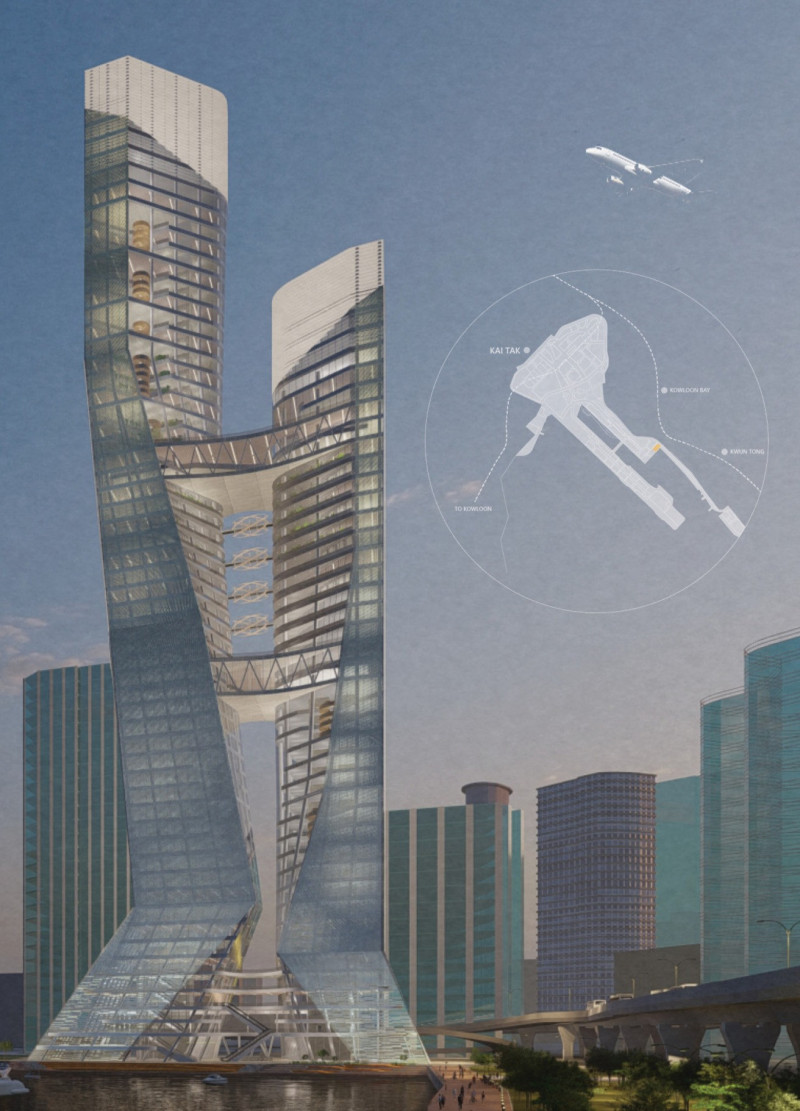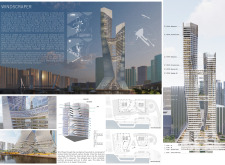5 key facts about this project
The Windscraper is located within the Kai Tak Development Scheme in Hong Kong, where the city’s former airport once stood. This area is being redeveloped to create a vibrant urban environment that connects different commercial spaces and brings life to Kowloon Bay. The design draws inspiration from the shape of an airplane wing, which is intended to improve airflow and reduce energy usage within the building.
Design Concept
The building’s form resembles the profile of an airplane wing, featuring a curved surface on one side and a flat surface on the other. This shape is not just for aesthetics; it enhances the structure's ability to channel wind effectively. By applying Bernoulli’s Principle, the design creates lower pressure below the wings, allowing the building to utilize high winds. This approach supports natural ventilation and energy efficiency.
Facade and Ventilation
A double facade is a significant feature of the building, equipped with motorized louvers that adjust based on wind conditions. These adjustable louvers promote airflow throughout the space. When the louvers are open, they allow wind to pass through, while their closed positions create an insulated area that directs air upward. This innovative system lessens the demand for mechanical ventilation, promoting comfort for the occupants.
Sustainable Energy Systems
Wind turbines are integrated into the design, bridging the two towers. They take advantage of the area’s winds to generate renewable energy. This energy not only powers the building but also helps to meet the energy needs of the adjacent developments. By including these turbines, the design aims to lower the overall carbon footprint and enhance energy independence.
Air Quality and Carbon Capture
At the top of the towers, carbon dioxide capture devices are part of the strategy to improve air quality. These devices feature rods that respond to wind, actively working to clean the air around the building. Additionally, a mechanical tree with sorbent disks collects CO2 from the atmosphere. Once the disks are full, they retract into a chamber where the gas is processed for reuse. This system reinforces the project's focus on environmental sustainability.
The interior design features multiple green atriums that support stack ventilation. These areas not only improve air quality but also create pleasant environments for occupants. With its thoughtful integration of natural elements and advanced technologies, the Windscraper addresses the challenges of urban living while contributing positively to the environment.



















































